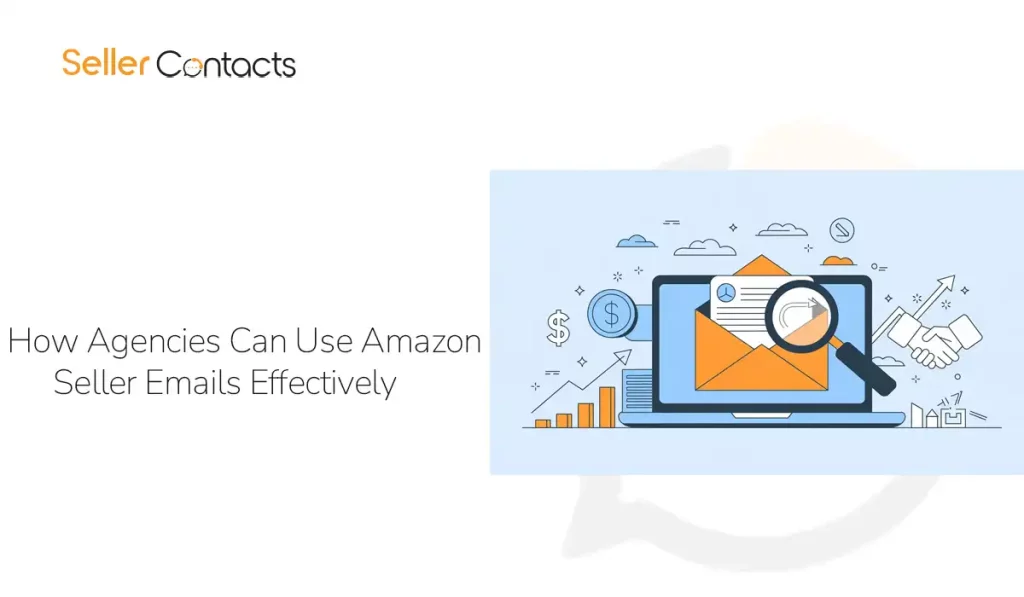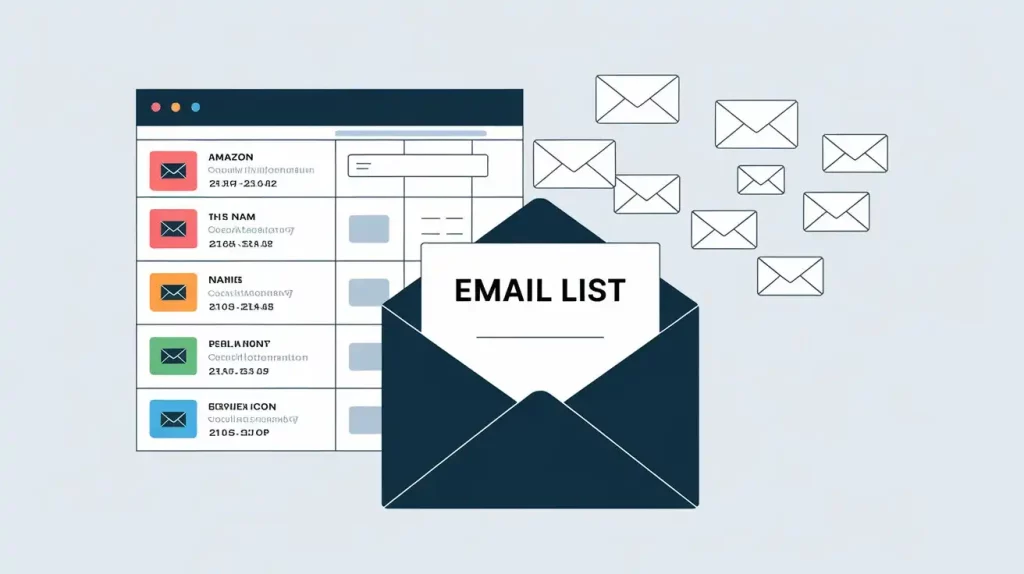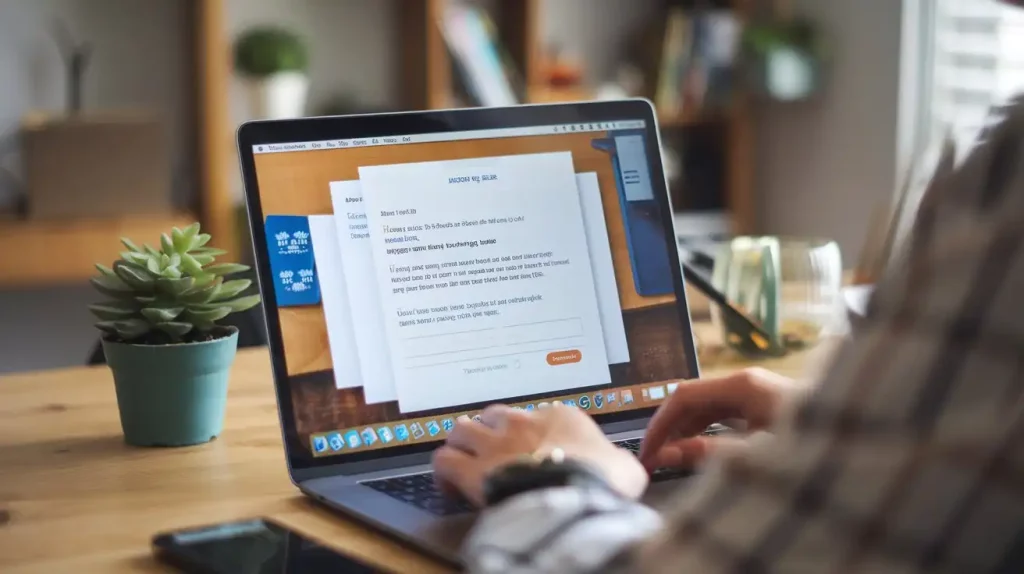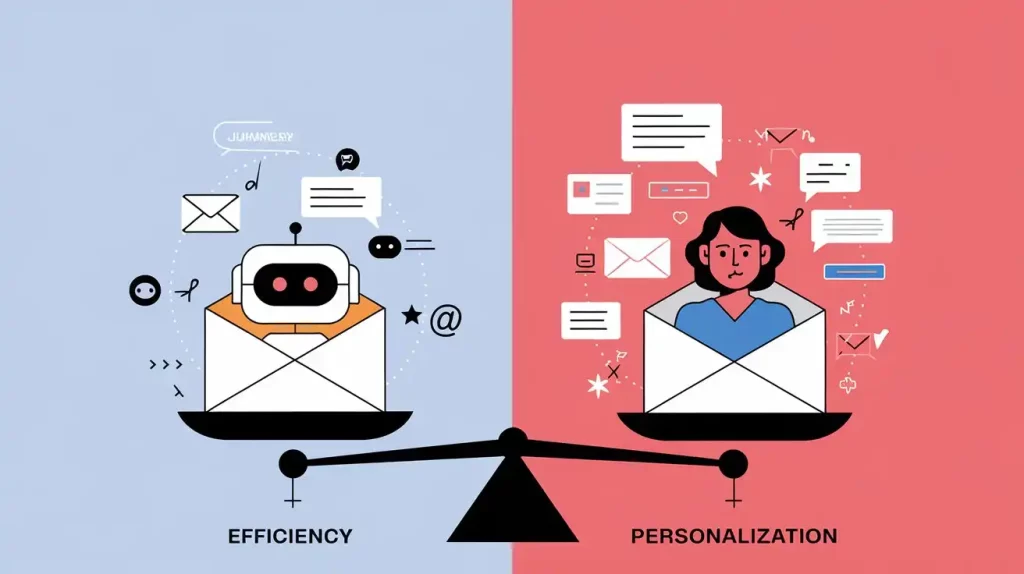How Agencies Can Use Amazon Seller Emails Effectively

Most Amazon sellers receive dozens of pitches every week, many of which get ignored or sent straight to spam. If your email looks like just another generic sales pitch, it won’t stand a chance. However, when done right, email outreach can deliver open rates of 30-50% and response rates of 10-15%, leading to higher conversions and increased revenue.
So, how can agencies effectively leverage Amazon seller emails to connect with the right sellers, craft compelling messages, and turn cold contacts into paying clients? This guide breaks it all down—step by step.
Step 1: Finding High-Quality Amazon Seller Emails
Before sending a single email, you need the right seller data. Targeting random Amazon sellers with no insight into their business is a waste of time. Instead, focus on finding the most relevant contacts based on your agency’s service offering.

Where to Get Verified Amazon Seller Emails
- Seller Contacts – The world’s largest Amazon seller database with verified contact details filtered by seller revenue, niche, location, and more.
- Amazon Seller Directories – Public databases and marketplaces list registered sellers but often lack direct contact details.
- LinkedIn & Seller Communities – While not always a direct source of emails, these platforms help identify active sellers who are engaged in growing their business.
- Trade Shows & Conferences – Events like the Prosper Show and White Label Expo are great for networking and gathering seller emails.
How to Filter the Best Seller Leads
The key to successful outreach is targeting the right Amazon sellers. Instead of a broad email blast, focus on:
- Sellers within your niche – If you offer Amazon PPC services, look for sellers already running ads. If you provide product sourcing, target wholesalers.
- Sellers with enough revenue – If a seller is making less than $5,000/month, they may not be ready for professional services.
- Private label or FBA sellers – These sellers are more likely to need listing optimization, PPC management, and brand-building services.
- Sellers who recently launched products – Newer sellers often struggle with PPC, listing optimization, and supply chain issues—making them great prospects.
Example: A PPC agency specializing in low ACoS strategies should prioritize sellers already running ads but struggling with high costs. A product sourcing agency should target sellers looking to expand their inventory.
Step 2: Crafting an Email That Amazon Sellers Will Actually Open
Even with the best email list, your outreach will fail if your emails are ignored. The average email open rate in the eCommerce industry is around 21%, but with the right approach, agencies targeting Amazon sellers can achieve 30-50% open rates.

Key Elements of a High-Performing Amazon Seller Email
A great email follows a simple structure:
1. A compelling subject line – If your subject line doesn’t grab attention, the email won’t be opened.
2. A personalized introduction – Sellers get too many generic emails—make yours relevant.
3. A clear value proposition – Show how you solve a specific problem they’re facing.
4. Social proof & credibility – Mention results, testimonials, or case studies to build trust.
5. A low-friction call-to-action – Instead of pushing for a sale, offer a free audit, consultation, or resource.
Examples of Effective Subject Lines
“[Seller Name], quick tip to boost your Amazon PPC performance”
“Noticed your listing—small tweak could increase your sales by 25%”
“Helping [Competitor’s Name] scale on Amazon—interested?”
“[Seller Name], let’s fix your ad spend & increase profits”
Example Email Templates That Get Replies
Example 1: Amazon PPC Management Pitch
Subject: Your Amazon Ads Could Be More Profitable—Here’s How
Hey [Seller Name],
I came across your [Product Name] on Amazon and saw that you’re running ads. Many sellers in your category are seeing higher ACoS and lower ROAS due to recent ad cost changes.
We recently helped [Competitor Name] lower their ACoS from 40% to 22% in just 6 weeks, leading to a 35% increase in profit.
Would you be open to a quick 10-minute call? I’d love to offer a free audit of your PPC campaigns—no strings attached.
Best,
[Your Name]
[Your Agency]
This works because the email clearly addresses a specific problem, includes a social proof and offers free value instead of hard sell.
Example 2: Amazon Listing Optimization Pitch
Subject: [Seller Name], saw your listing—quick improvement tip
Hi [Seller Name],
I noticed your listing for [Product Name] and saw a small opportunity to boost conversion rates by 15-20% with better keyword placement and enhanced images.
We recently helped [Brand Name] do this, and their sales jumped by 38% in two months.
Want me to send a free mini report on how you can improve your listing? Just reply “Yes” and I’ll send it over.
Best,
[Your Name]
[Your Agency]
This works because the email gets straight to the point, includes real results, and a call-to-action that’s easy to say yes to.
Mistakes That Kill Your Emails (And How to Avoid Them)
- Generic, Copy-Paste Messages – Sellers ignore anything that feels automated. Personalize your emails with the seller’s name, product, or niche.
- Too Much Text – Keep emails 100-150 words max. Get to the point fast.
- Hard Selling in the First Email – Offer value first (audit, insights) before asking for a call.
- No Follow-Up – Most responses come after at least 1-2 follow-ups.
Step 3: Following Up Without Annoying Amazon Sellers
Even the best cold email won’t always get an immediate response. In fact, 60-70% of replies come after at least one follow-up. However, too many agencies either give up too soon or send aggressive follow-ups that push sellers away.
How Many Follow-Ups Are Ideal?
A good rule of thumb is to send 3-4 follow-ups spread over 10-14 days. Here’s a simple breakdown:
| Follow-Up Number | Timing | Purpose |
| 1st Follow-Up | 2-3 days after the first email | Gentle reminder, restating value |
| 2nd Follow-Up | 4-5 days after the 1st follow-up | Provide additional insight or case study |
| 3rd Follow-Up | 4-5 days after the 2nd follow-up | Address a common objection |
| Final Follow-Up | 5-7 days later | Polite closure with a last chance offer |
This sequence ensures you stay persistent without becoming intrusive.
Example Follow-Up Templates That Work
Follow-Up 1: Reminder & Restating Value
Subject: [Seller Name], just checking in
Hi [Seller Name],
I wanted to quickly follow up on my last email. We’ve helped [Competitor’s Name] improve their [PPC, listing, etc.] and boost sales by [X%]—I’d love to see if we can do the same for you.
Would you be open to a quick chat this week? Let me know what works for you.
Best,
[Your Name]
Follow-Up 2: Additional Insight or Case Study
Subject: Here’s what we did for [Competitor’s Name]
Hey [Seller Name],
Just a quick follow-up—I thought you’d be interested in this:
We recently helped [Competitor’s Name] reduce their ACoS by 30% in 45 days, increasing their profits by 40%.
If you’d like, I can share a free audit of your campaigns to see if we can do the same for you. No pressure—just insights!
Let me know if that sounds useful.
Best,
[Your Name]
Follow-Up 3: Addressing Common Objections
Subject: Is now just a bad time?
Hi [Seller Name],
I know running an Amazon business can be hectic. If now isn’t the right time, no worries. But if you’re still looking to [lower ACoS, optimize listings, etc.], I’d be happy to schedule a quick 10-minute call to share what’s working for similar sellers.
Let me know what works best for you.
Best,
[Your Name]
Final Follow-Up: The Last Chance Email
Subject: Should I close your file?
Hey [Seller Name],
I’ve reached out a few times, but I don’t want to keep bothering you if this isn’t the right fit.
If you’re interested, I’d still love to offer a free audit or consultation—just let me know. Otherwise, I’ll assume now’s not the right time and won’t follow up again.
Thanks,
[Your Name]
This email uses loss aversion (fear of missing out) to encourage responses. Some sellers will reply just to say, “I was meaning to get back to you!”
Step 4: Automating Emails Without Losing the Personal Touch
Should You Use Email Automation?
Yes, but carefully. Email automation saves time, but it can also lead to spammy, impersonal messages if not done right. The best approach is semi-automation—use tools to schedule emails while still personalizing key details.

Best Tools for Managing Amazon Seller Email Campaigns
- Lemlist – Personalized cold email automation with tracking features.
- Reply.io – AI-powered email outreach with smart follow-ups.
- Woodpecker – Helps keep emails warm and prevents spam folder issues.
- Hunter.io – Verifies seller emails to improve deliverability.
How to Personalize Automated Emails
- To avoid sounding like a bot:
Use [Seller Name] and [Product Name] in emails. - Mention a specific challenge they’re facing.
- Reference their niche or category.
Example:
Bad Email: “Hi there, I offer Amazon PPC management. Let’s talk.”
Good Email: “Hey Sarah, I noticed your listing for organic pet treats. Your PPC strategy looks strong, but I see a way to lower ACoS—interested in a free review?”
This small effort dramatically improves engagement.
Step 5: Tracking Performance & Improving Response Rates
To know what’s working, track key metrics like:
| Metric | Good Benchmark |
| Open Rate | 30-50% |
| Response Rate | 10-15% |
| Meeting Conversion Rate | 3-5% |
| Spam Complaint Rate | Below 0.1% |
- If Open Rates Are Low (Under 20%) – Your subject lines need improvement. Test shorter, curiosity-driven lines.
- If Response Rates Are Low (Under 5%) – Your value proposition might not be strong enough. Refine your messaging.
- If You Get Spam Complaints – Your emails might sound too “salesy.” Focus on value, not hard selling.
A/B Testing Your Emails
The best agencies continuously test their outreach by experimenting with:
Different subject lines
- Personalization levels
- Follow-up timing
- Value propositions
For example, you might test:
- Version A: “Your PPC costs seem high—want free insights?”
- Version B: “Cut PPC costs by 25%—see how [Competitor Name] did it”
After 100-200 emails, analyze which one gets better open & response rates.
Step 6: Turning Email Responses Into Clients
Once you get a reply, the next step is moving the seller toward a paid service. The biggest mistake agencies make? Jumping straight into a sales pitch.

The Best Way to Handle Replies
- If they ask for more info – Offer a free resource, case study, or audit.
- If they’re interested but hesitant – Address concerns and offer a short call.
- If they want immediate help – Move directly into a consultation.
Example Response:
Hey [Seller Name],
Thanks for replying! To give you the best insights, I’d love to take a quick look at your campaigns. Would you be open to a free PPC audit? If so, just send me your ASINs or campaign data, and I’ll get back to you with actionable recommendations.
Let me know what works for you!
Best,
[Your Name]
This keeps the conversation warm without pushing too hard.
Final Thoughts: The Right Approach Makes All the Difference
Using Amazon seller emails effectively isn’t about mass outreach—it’s about smart, targeted communication. Agencies that focus on personalization, value-first messaging, and strategic follow-ups see far better results than those who simply spam sellers.
Want instant access to high-quality Amazon seller emails? Seller Contacts provides verified emails, revenue filters, and niche-specific leads to help agencies connect with the right sellers—fast.
